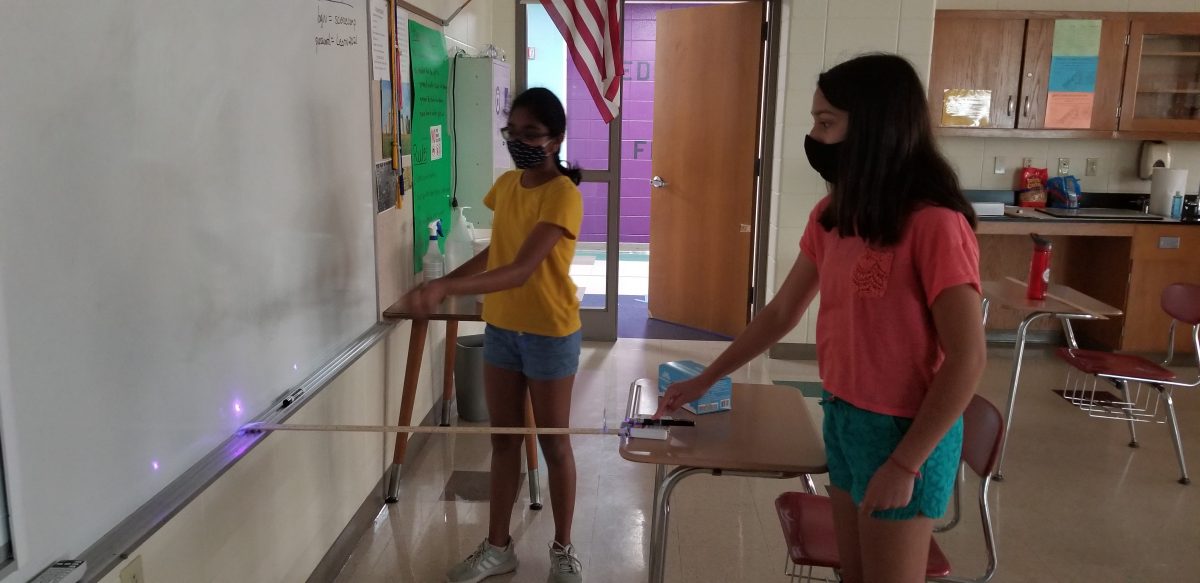
This month, the Wonders of Quantum Physics participated in the UW Biocore’s weeklong science camp in Mazomanie, WI. Read all about it in this article published in the Milwaukee Journal Sentinel.

This month, the Wonders of Quantum Physics participated in the UW Biocore’s weeklong science camp in Mazomanie, WI. Read all about it in this article published in the Milwaukee Journal Sentinel.
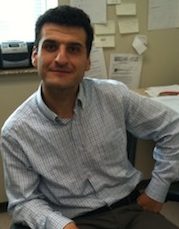
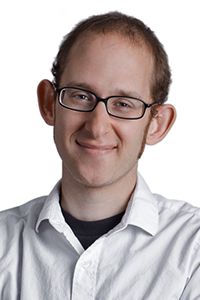
In its inaugural round of funding, the Office of the Vice Chancellor for Research and Graduate Education’s (OVCRGE) Research Forward initiative selected 11 projects, including projects from WQI’s Deniz Yavuz and Randall Goldsmith.
Yavuz is Principal Investigator and Goldsmith is co-Principal Investigator (along with Dan Van der Weide, professor of electrical engineering) on a project titled “Compact and efficient terahertz optical modulators.”
Goldsmith is co-PI on a second funded project, “Therapeutic targeting of post-transcriptional RNA processing in human diseases.”
OVCRGE hosts Research Forward to stimulate and support highly innovative and groundbreaking research at the University of Wisconsin–Madison. The initiative is supported by the Wisconsin Alumni Research Foundation (WARF) and will provide funding for 1–2 years, depending on the needs and scope of the project.
Research Forward seeks to support collaborative, multidisciplinary, multi-investigator research projects that are high-risk, high-impact, and transformative. It seeks to fund research projects that have the potential to fundamentally transform a field of study as well as projects that require significant development prior to the submission of applications for external funding. Collaborative research proposals are welcome from within any of the four divisions (Arts & Humanities, Biological Sciences, Physical Sciences, Social Sciences), as are cross-divisional collaborations.
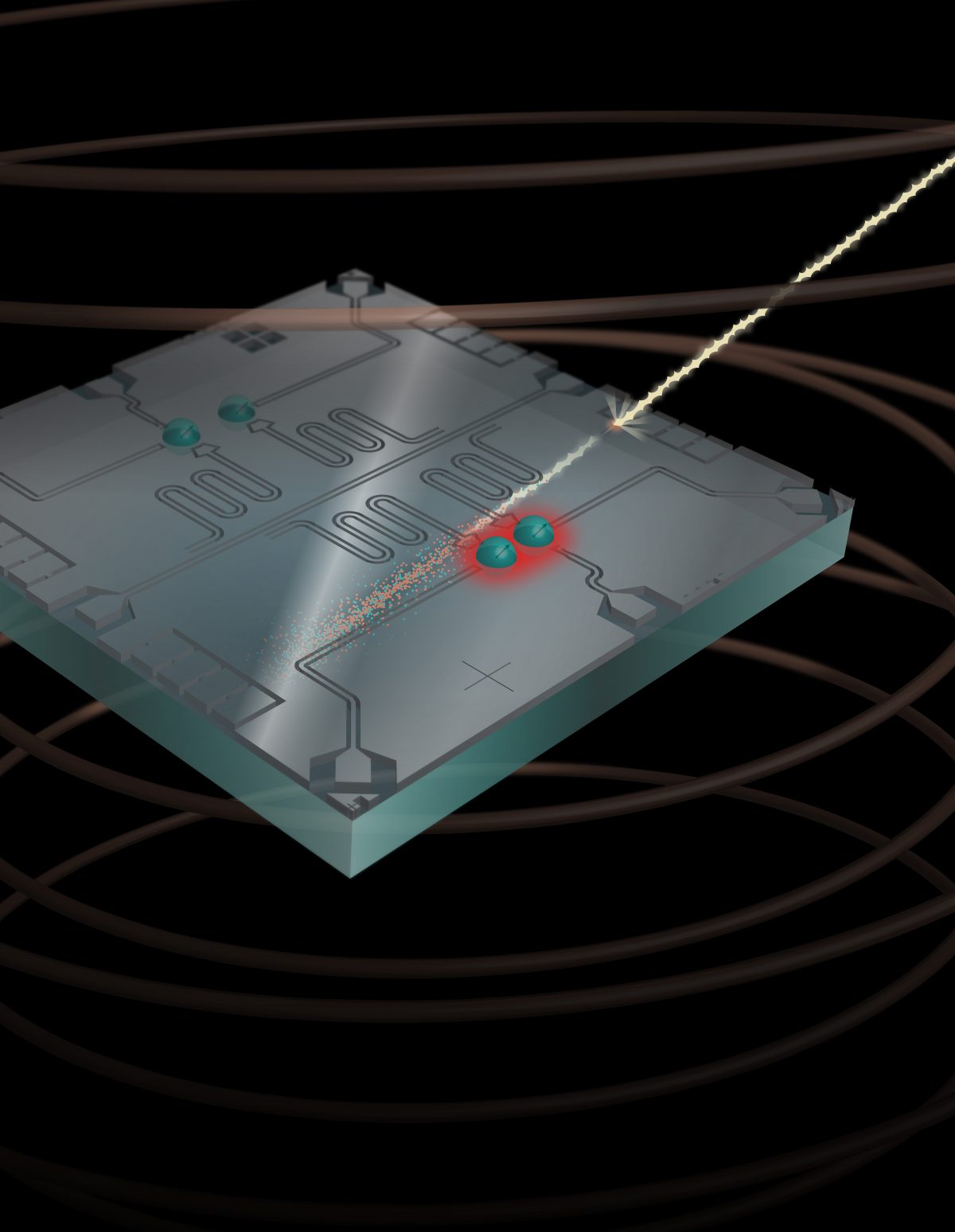
Quantum computers could outperform classical computers at many tasks, but only if the errors that are an inevitable part of computational tasks are isolated rather than widespread events.
Now, researchers at the University of Wisconsin–Madison have found evidence that errors are correlated across an entire superconducting quantum computing chip — highlighting a problem that must be acknowledged and addressed in the quest for fault-tolerant quantum computers.
The researchers report their findings in a study published June 16 in the journal Nature, Importantly, their work also points to mitigation strategies.
“I think people have been approaching the problem of error correction in an overly optimistic way, blindly making the assumption that errors are not correlated,” says UW–Madison physics Professor Robert McDermott, member of the Wisconsin Quantum Institute and senior author of the study. “Our experiments show absolutely that errors are correlated, but as we identify problems and develop a deep physical understanding, we’re going to find ways to work around them.”
Read the full story at https://news.wisc.edu/correlated-errors-in-quantum-computers-emphasize-need-for-design-changes/
The UW–Madison Physics Department and the Wisconsin Quantum Institute are pleased to welcome 18 students to the M.S. in Physics – Quantum Computing program. These students make up the third cohort to begin the program and are the largest entering class to date.
“We are really pleased and proud that the MSPQC program continues to grow and prosper in its third year,” says Bob Joynt, MSPQC Program Director, professor of physics, and WQI member. “We look forward to providing a great experience for the class of 2021. A particular focus this year will be the formation of collaborative teams that will push forward research in quantum computing.”
Of note, three women are in the entering class, marking the first time that women have enrolled in MSPQC. Other facts and figures about this year’s cohort include:
The department is following University guidelines and is planning for students to join us in Madison this fall, with in-person instruction. Over the summer, students can attend optional virtual orientation sessions to prepare for the program.
“The pandemic imposed restrictions on our admissions and recruitment activities which forced us to work virtually, but I believe these barriers made our programming more accessible and led to the most diverse and determined incoming cohort of MSPQC students to date,” says Jackson Kennedy, MSPQC coordinator. “Although I have been able to meet our incredibly talented students virtually, I cannot wait to greet them in-person this Fall as we celebrate a long-awaited return to campus.”
In addition to Joynt, the department thanks the other faculty who serve on the MSPQC admissions committee — Alex Levchenko, Robert McDermott, Maxim Vavilov and Deniz Yavuz — for application review. We also thank Michelle Holland and Jackson Kennedy for organizing recruiting efforts.
The MSPQC program welcomed its first students in Fall 2019 – the first-ever class of students in the U.S. to enroll in a quantum computing M.S. degree program. The accelerated program was born out of a recognized need to rapidly train students for the quantum computing workforce and is designed to be completed in 12 months. It provides students with a thorough grounding in the new discipline of quantum information and quantum computing.
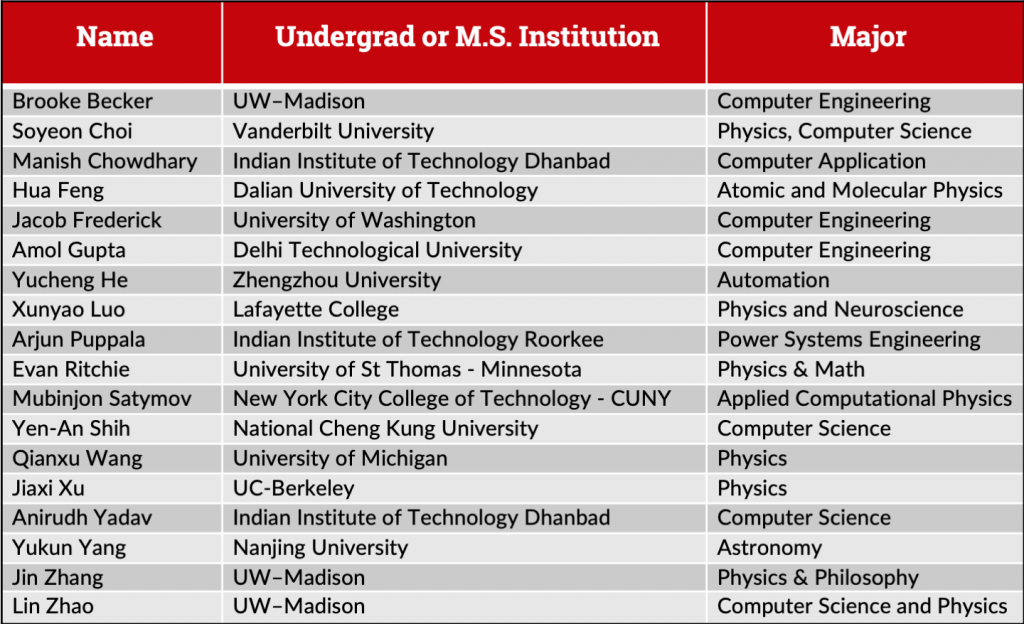
From radio to television to the internet, telecommunications transmissions are simply information carried on light waves and converted to electrical signals.
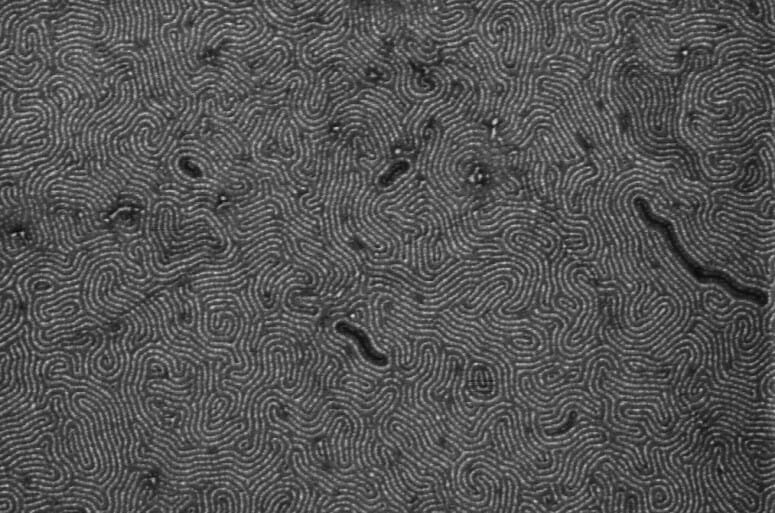
Silicon-based fiber optics are currently the best structures for high-speed, long distance transmissions, but graphene — an all-carbon, ultra-thin and adaptable material — could improve performance even more.
In a study published April 16 in ACS Photonics, University of Wisconsin–Madison researchers fabricated graphene into the smallest ribbon structures to date using a method that makes scaling-up simple. In tests with these tiny ribbons, the scientists discovered they were closing in on the properties they needed to move graphene toward usefulness in telecommunications equipment.
“Previous research suggested that to be viable for telecommunication technologies, graphene would need to be structured prohibitively small over large areas, (which is) a fabrication nightmare,” says Joel Siegel, a UW–Madison graduate student in physics professor Victor Brar’s group and co-lead author of the study. “In our study, we created a scalable fabrication technique to make the smallest graphene ribbon structures yet and found that with modest further reductions in ribbon width, we can start getting to telecommunications range.”
For the full story, please visit: https://news.wisc.edu/flexible-easy-to-scale-nanoribbons-move-graphene-toward-use-in-tech-applications/
The Office of the Vice Chancellor for Research and Graduate Education has announced 23 faculty winners of the Vilas Associates Competition, including WQI faculty member Deniz Yavuz. The Vilas Associates Competition recognizes new and ongoing research of the highest quality and significance.
The award is funded by the William F. Vilas Estate Trust.
Recipients are chosen competitively by the divisional research committees on the basis of a detailed proposal. Winners receive up to two-ninths of research salary support (including the associated fringe costs) for both summers 2021 and 2022, as well as a $12,500 flexible research fund in each of the two fiscal years. Faculty paid on an annual basis are not eligible for the summer salary support but are eligible for the flexible fund portion of this award.
Congrats to Jacques Van Damme, a member of the first class of MSPQC students who graduated this past August, on his first-author publication! The study, published in Physical Review A, is titled, “Impacts of random filling on spin squeezing via Rydberg dressing in optical clocks.” Co-authors include WQI faculty members Mark Saffman, Maxim Vavilov, and senior author Shimon Kolkowitz. | Link to the PRA publication
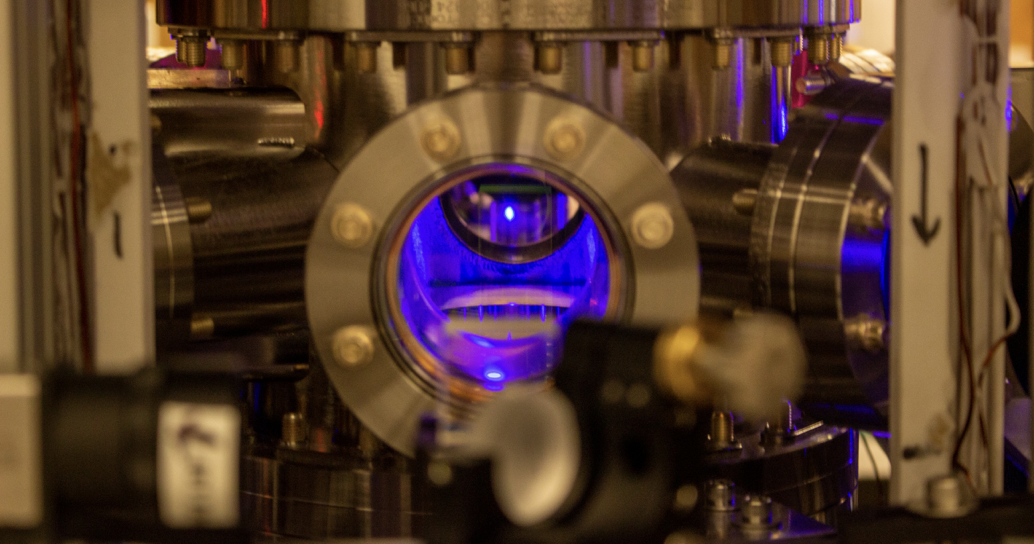
Optical atomic clocks are already the gold standard for precision timekeeping, keeping time so accurately that they would only lose one second every 14 billion years. Still, they could be made to be even more precise if they could be pushed past the current limits imposed on them by quantum mechanics.
With two new grants from the U.S. Army Research Office, an element of the U.S. Army Combat Capabilities Development Command’s Army Research Laboratory, UW–Madison physics professor Shimon Kolkowitz proposes to introduce quantum entanglement — where atoms interact with each other even when physically distant — to optical atomic clocks. The improved clocks would allow researchers to ask questions about fundamental physics, and they have applications in improving quantum computing and GPS.
Three UW–Madison physics professors and their colleagues have been awarded a U.S. Department of Energy (DOE) High Energy Physics Quantum Information Science award for an interdisciplinary collaboration between theoretical and experimental physicists and experts on quantum algorithms.
The grant, entitled “Detection of dark matter and neutrinos enhanced through quantum information,” will bring a total of $2.3 million directly to UW-Madison. Physics faculty include principal investigator Baha Balantekin as well as Mark Saffman, and Sue Coppersmith. Collaborators on the grant include Kim Palladino at the University of Oxford, Peter Love at Tufts University, and Calvin Johnson at San Diego State University.
With the funding, the researchers plan to use a quantum simulator to calculate the detector response to dark matter particles and neutrinos. The simulator to be used is an array of 121 neutral atom qubits currently being developed by Saffman’s group. Much of the research plan is to understand and mitigate the behavior of the neutral atom array so that high accuracy and precision calculations can be performed. The primary goal of this project is to apply lessons from the quantum information theory in high energy physics, while a secondary goal is to contribute to the development of quantum information theory itself.
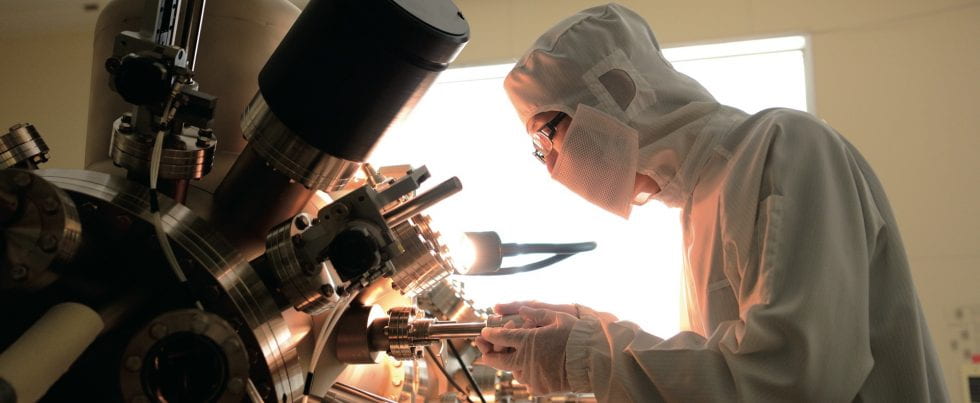
This story was originally published by the Chicago Quantum Exchange
The Chicago Quantum Exchange, a growing intellectual hub for the research and development of quantum technology, has added to its community six new partners in technology, finance, manufacturing, and consulting that are working to bring about and primed to take advantage of the coming quantum revolution. New corporate partners are Discover Financial Services (NYSE: DFS), Hamamatsu Photonics, Protiviti, Quantum Machines, and Super.tech. The Chicago Quantum Exchange has also partnered with P33, a private sector led non-profit dedicated to driving innovation leadership for the Chicago region.
Several of the new partner organizations —Discover, Protiviti, Super.tech and P33— have locations in Chicago, further emphasizing the city’s commitment to quantum information science and technology.
“P33 leverages Chicago’s key strengths – its diverse economy, strong system of universities and research centers, and burgeoning start-up ecosystem- to catalyze the growth of the city’s tech economy,” said Brad Henderson, founding CEO of P33. “By partnering with the Chicago Quantum Exchange, we can provide more opportunities for collaboration across traditional boundaries, attracting investment and engagement that benefits our broader community.”
Headquartered at the University of Chicago’s Pritzker School of Molecular Engineering, the Chicago Quantum Exchange is anchored by the University of Chicago, the U.S. Department of Energy’s Argonne National Laboratory and Fermi National Accelerator Laboratory (both operated for DOE by the University of Chicago), and the University of Illinois at Urbana-Champaign, and includes the University of Wisconsin-Madison and Northwestern University.
The Chicago Quantum Exchange and its partners advance the science and engineering necessary to build and scale quantum technologies, develop practical applications, and work with others to explore these possibilities. The results of these technologies – precision data from quantum sensors, advanced quantum computers and their algorithms, and securely transmitted information – will transform today’s leading industries. The addition of the new corporate partners brings a total of 18 companies into the Chicago Quantum Exchange to work with scientists and engineers at universities and the national laboratories in the region.
“The addition of new partners located here in Chicago, and from around the world, enhances our rich collaboration dedicated to advancing quantum science and engineering as well as driving quantum technologies here in Chicago,” said David Awschalom, the Liew Family Professor in Molecular Engineering and Physics at the University of Chicago, senior scientist at Argonne, director of the Chicago Quantum Exchange, and director of Q-NEXT, one of five new Department of Energy Quantum Information Science Centers. “The participation of our partners and their perspectives will help shape the scope of research and enhance our programs to develop a future quantum workforce.”
Chicago Quantum Exchange members and corporate partners engage in collaborative research efforts, joint workshops to develop new research directions, and opportunities to train future quantum engineers. The Chicago Quantum Exchange has existing partnerships with Boeing; IBM; Applied Materials, Inc.; Cold Quanta; HRL Laboratories, LLC; Intel; JPMorgan Chase; Microsoft; Quantum Design; Quantum Opus, LLC; Qubitekk; Rigetti Computing; and Zurich Instruments.
The Chicago Quantum Exchange’s newest partners include organizations ranging in interest and expertise from quantum control instrumentation and algorithms to consulting and finance.
They include:
Several of the partners have ongoing or recent engagements with Chicago Quantum Exchange and its member institutions.
The Illinois Quantum Information Science and Technology Center at the University of Illinois at Urbana-Champaign is collaborating with Quantum Machines to develop control solutions and cloud access layer, as well as other research and education programs in the center’s testbed for hybrid quantum networks.
Super.tech, a company founded by Pranav Gokhale, a recent University of Chicago computer science PhD graduate, is a member of the most recent cohort of the Argonne Chain Reaction Innovations incubator program. The company also participated in and received funding from the George Shultz Innovation Fund, a program run by the Polsky Center for Entrepreneurship and Innovation at the University of Chicago.
For some partners, engaging with the Chicago Quantum Exchange is an effort to uncover practical applications and explore the potential of quantum technology. Discover, for example, will work with the Chicago Quantum Exchange to see if they can use quantum technology large scale data analysis and fraud detection.
“Through our partnership with the Chicago Quantum Exchange, we have the opportunity to expand dramatically the scale and speed of our data analysis,” said Keith Toney, executive vice president and chief data and analytics officer at Discover. “Quantum is an example of how our recently announced data and analytics organization is embracing emerging technology to push the limits of data analytics and working with the Chicago Quantum Exchange will support that.”
Photo Caption: A Hamamatsu Photonics scientist tests optical equipment in the company’s Central Research laboratory.
Credit: Photo courtesy of Hamamatsu Photonics